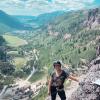- 1. Plan Your Shot
- 1.1. Questions to Consider for Specific Shots
- 1.2. What if I don't want to plan?
- 2. Experiment with Perspective
- 2.1. Ideas For Changing Your Perspective
- 2.2. Consider the Rule of Thirds
- 2.3. Use the Leading Lines in Composition
- 3. Travel as Much as You Can
- 3.1. Visit National Parks
- 3.2. Other Places to Visit
- 4. Camera Settings
- 4.1. Always Shoot in RAW, not JPEG
- 4.2. Aperture, Shutter Speed, and ISO
- 5. Tag Us In Your Photos!

Simple Landscape Photography Tips to Remember en Route
Table of Contents [Show]
You’re going on the trip of a lifetime filled with beautiful scenery, and instead of describing the jaw-dropping sights to your friends and family, you want to share inspiring images. With the advent of smartphones, everyone has the chance to pursue an amateur form of landscape photography.
But for those more serious about the art of taking landscape photos, getting the right camera settings requires skill and dedication. We’ve compiled some quick landscape photography tips to elevate your photography game from bland to breathtaking.
Plan Your Shot
While possible to capture an amazing landscape photo on a whim, you’ll have better chances if you plan your shot. If you’ve been inspired by another photographer’s work or have already visited a location, you may already have the perfect shot in mind. If this is the case, you’ll need to keep a few things in mind.
Questions to Consider for Specific Shots
- What will be the best to capture your desired image?
- Do you want to face East or West?
- Will you go at sunrise, sunset?
- Do you want to go during inclement weather to create a gloomy cast? If so, check the weather report.
- Will you need assistance to capture a remote or obscure location? If so, secure a photography partner.
You may not always have a specific shot in mind, so do your research on a location to get inspried. To browse ideas online before visiting, peruse the work of local landscape photographers or spend time on Google Earth. Of course, photographers do not always know the exact shot they want before venturing to a location.
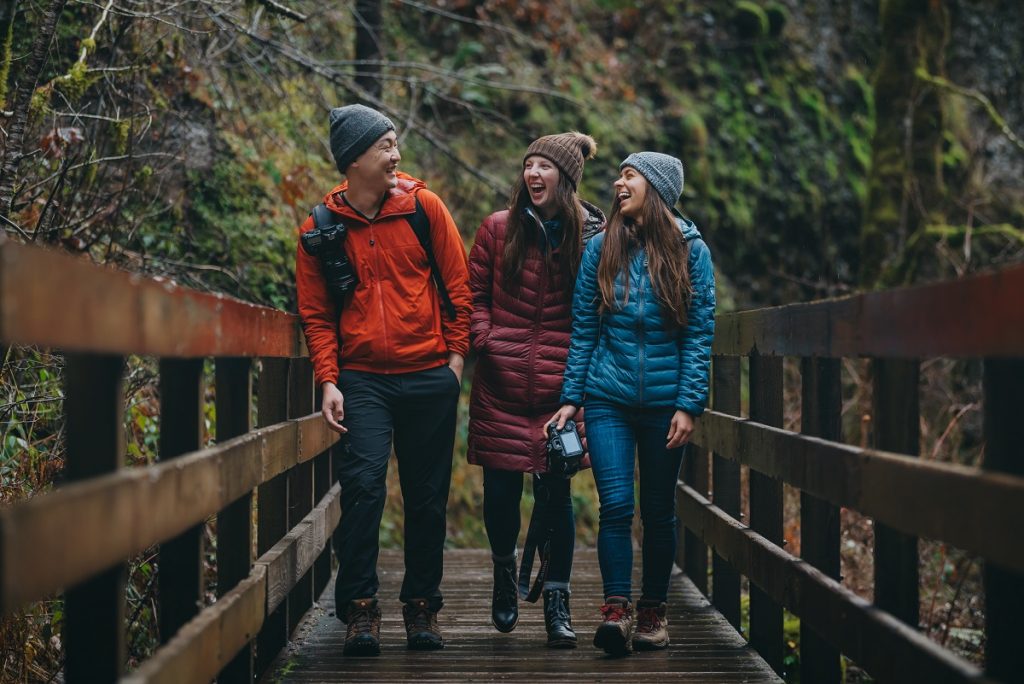
What if I don't want to plan?
If you haven’t had any time to plan or research, don’t fret! Planning out your landscape shots can help you enter into a photographer’s mindset, but always keep an open mind about new ideas and perspectives.
Oftentimes, the beauty and excitement come from finding a shot along your journey. Sometimes the unplanned shots are the best of the bunch.
Read Photographing Winter Surfing in Alaska with Scott Dickerson.
Experiment with Perspective
Planning out picturesque ideas for your ideal shot can be helpful, but you should always play with it in the moment. Whether you’ve had a photo in mind for a while, or you’ve stumbled upon a magic scene by chance, an inventive perspective can really elevate your photography skills.
Ideas For Changing Your Perspective
- Raise or lower the angle or the shot
- Move to your left or right
- Take a few steps further away
- Move closer to your landscape
- Change the zoom of your lenses, or the lenses entirely (try to use wide-angle lens when capturing stunning landscape for a greater depth of field)
- Look for objects to incorporate into the shot
- Try to frame your shot with natural elements such as trees
- Use a tripod
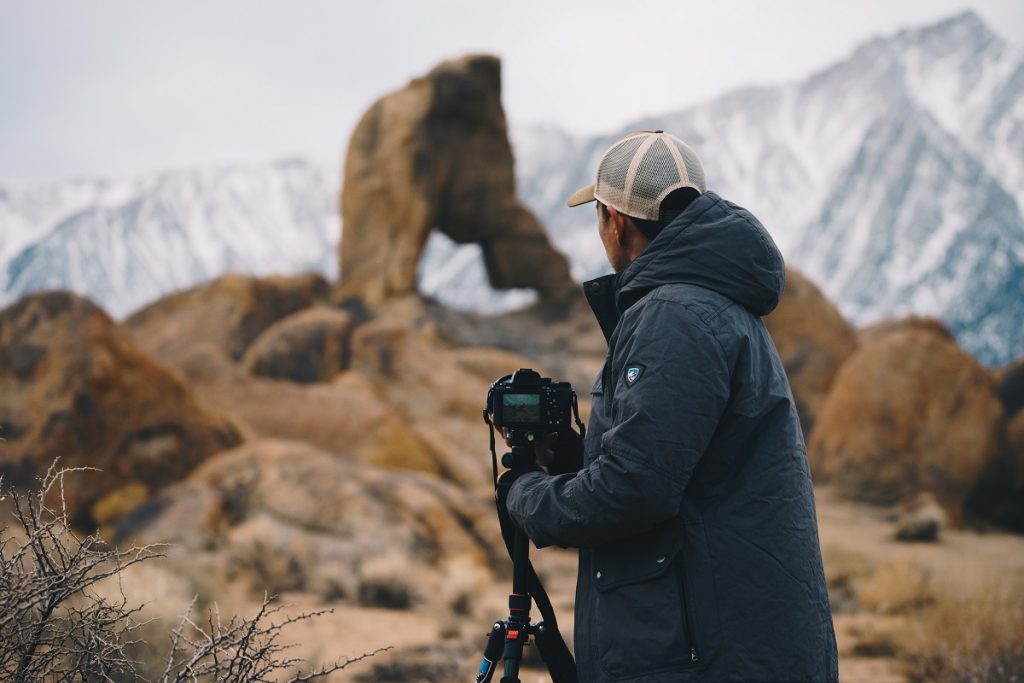
Consider the Rule of Thirds
The Rule of Thirds is a basic compositional structure that most photographers learn very early on. Do not forget this when discovering new areas of photography interest.
Break down your frame into thirds horizontally and vertically to create nine theoretical squares. This can help you create balance and movement within your image. The center squares can be the main focus, but many photographers prefer to place their main subject near the squares on the edge.
This is not a hard-and-fast rule, but rather something to keep in mind when taking landscape photos. Feel free to play with the Rule of Thirds as your advance as a landscape photographer.
Use the Leading Lines in Composition
As the viewer's eye is naturally drawn to lines and line directions in images, use the leading lines composition technique to lead the viewer's eye to the subject of your landscape photo. This is a simple, but powerful effect that photographers also use to create the illusion of depth in landscape images.
Leading lines can be horizontal, vertical, diagonal, or curved, and finding them in nature shouldn't be too difficult. Any path, trail, railroad track, coastline, stream, mountain, or river can be the leading line in your photo. One of the best landscape photography tips is to practice catching lines around you in nature and combine them with the Rule of Thirds.
If you happen to catch two diagonal lines that meet together in the background, the viewer's attention will naturally follow the lines to their intersection. These are called converging lines. Put the subject of your photo to the intersection of the lines (convergence point) to make it stand out in the scene.
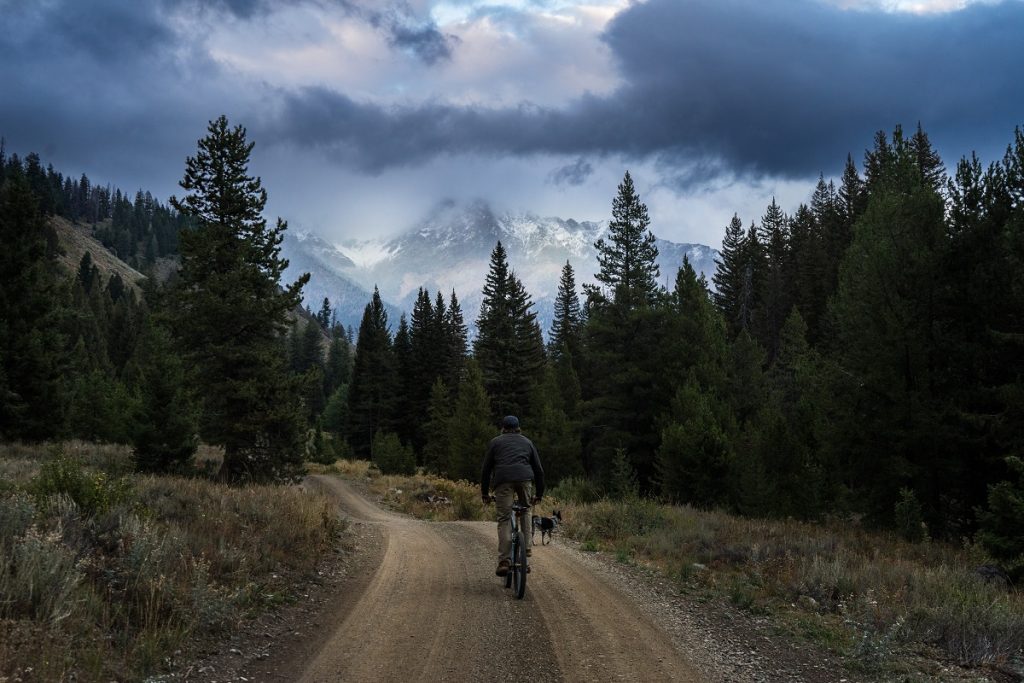
Travel as Much as You Can
Chances are there is an immense amount of gorgeous scenery around you. Sometimes though, as we grow accustomed to our own environment, we forget to appreciate the beauty in our own backyard. Even if you do recognize how lucky you are to live in a gorgeous place, traveling to new places can spark excitement within you to take that extra effort in mastering your art. That's why using every opportunity to travel is one of our favorite landscape photography tips.
There’s so much diversity on the planet and within the United States. From flat crimson red deserts to tropical islands to lush green forests to immense rugged mountains, it’s almost impossible not to find inspiration when you incorporate travel into your journey as a landscape photographer.
A love of travel is often one of the main reasons many photographers decide to pursue landscape photography in the first place.
Visit National Parks
National parks are an absolute haven for landscape photographers. You can guarantee unbeatable landscapes when visiting these parks, which are scattered across the country. Look up national parks near you. Have you visited (and photographed) all of them?
If not, figure out which ones you’d like to visit first, and start planning a trip! If you want to be a better landscape photographer, you’ll need to become a better explorer as well.
Here are a few of our favorite national parks for beautiful landscape photography. When you travel, try to practice the landscape photography tips all the time.
Bryce Canyon National Park (Utah)
Offering the largest collection of hoodoos in the entire world, Bryce Canyon National Park will entice you with its surreal desert landscapes. (If you don’t know, a hoodoo is a column or pinnacle of weathered rock!)
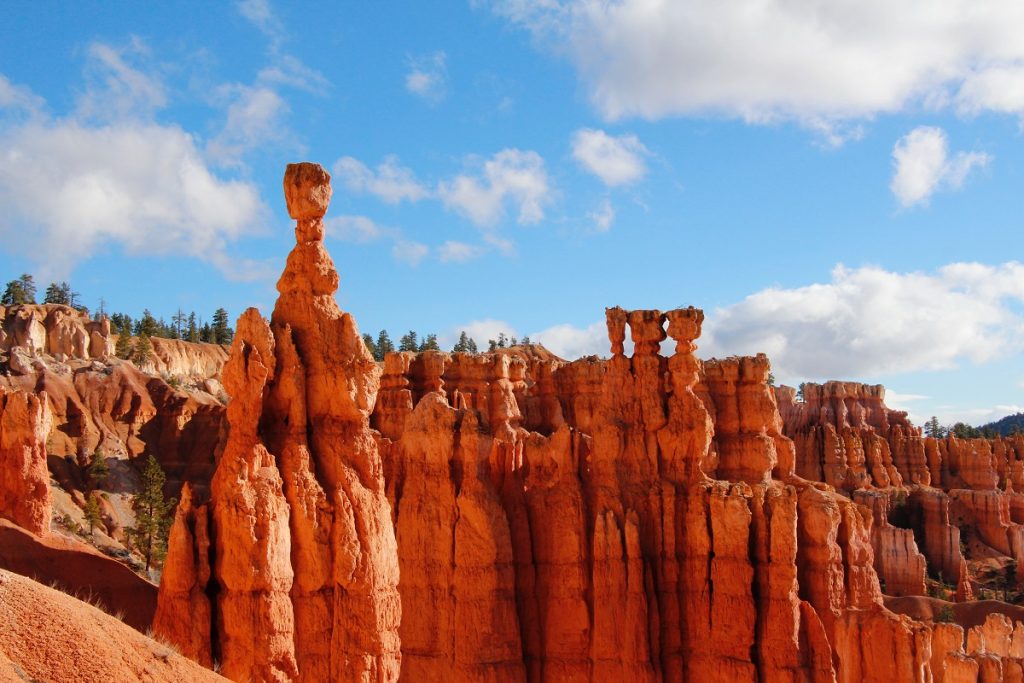
Glacier National Park (Montana)
With turquoise lakes, active wildlife, immense waterfalls, and vibrant vegetation, you’ll see why this national park should require several days to truly explore with your camera.
Haleakala National Park (Hawaii)
This park includes several microclimates, tropical plants, and even an area known as the Seven Sacred Pools. You’re bound to capture unforgettable memories as well as images while traveling to its many waterfalls, pools, cliffs, forests, and more.
Olympic National Park (Washington)
This is one of the most diverse national parks in the country. There are four main regions of the park: the Pacific Coastline, alpine areas, the temperate Hoh Rainforest in the west, and drier forests on the east. This means you could capture four vastly different landscapes within the same trip!
Yosemite National Park (California)
Yosemite has iconic massive rocks that are truly unique to the rest of the country. Because of this, the area of Yosemite Valley is a well-known spot for tourists as well as avid rock climbers. From its many viewpoints to its nature beyond the more visited parts, Yosemite offers endless breathtaking landscapes.
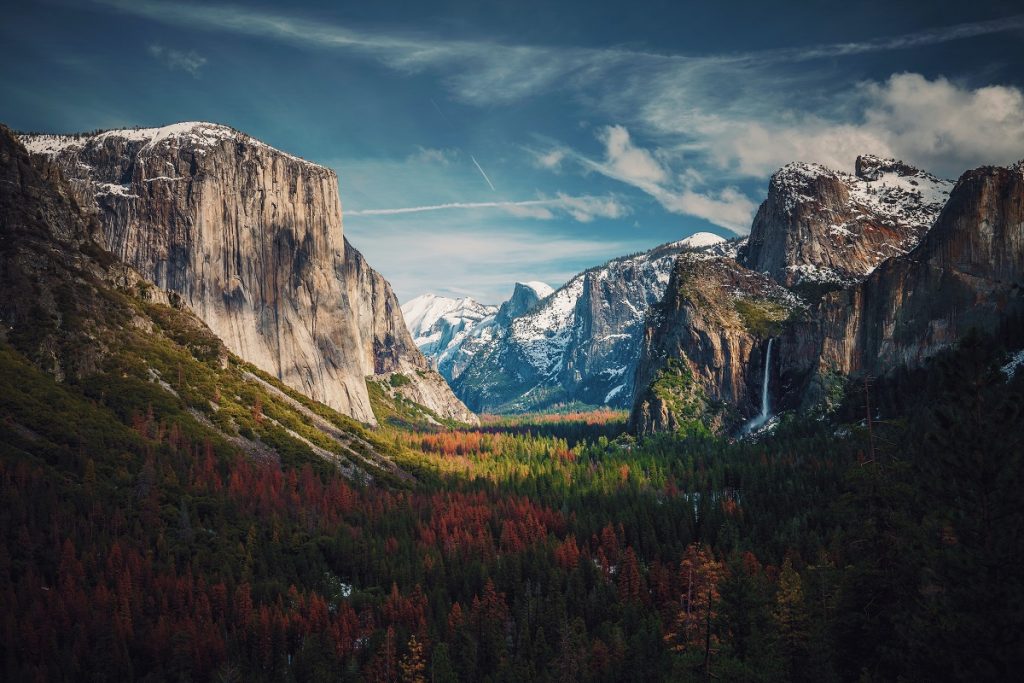
Other Places to Visit
With 63 national parks across the United States, these are just a handful of potential locations to visit. Check out The 35 Most Photogenic Landscapes in the U.S. to see if there are any other top nature contenders near you.
Plus, keep in mind that there can be some unforgettable landscape photos taken at state parks, national forests, secluded lakes, quiet creeks, hiking trails, and tons of other nature destinations.
Camera Settings
Your camera settings will depend on the time of day, weather conditions, and your focal point. There is no right answer when it comes to your camera settings. Each photographer has different preferences, but there are some general rules to understand and know. One of the smartest landscape photography tips here is to experiment with different settings in different lights and times of the day.
Always Shoot in RAW, not JPEG
RAW files preserve all of your photos' data, whereas JPEG files are already edited and compressed. So much of photography is the ability to edit your photos, as RAW allows you to manipulate every highlight, color, or shadow detail you desire.
Aperture, Shutter Speed, and ISO
The three basic settings all photographers should understand how to use are aperture, shutter speed, and ISO. These will affect the quality of your photos, and they all work together.
Aperture
Aperture refers to the size of the hole in the lens where light enters the camera. The size is referred to as an f-stop, and the lower the f-stop, the lower the depth of field.
When you see a photo with a blurred background, this has a low aperture. A higher aperture, such as f/12, works well for landscape photography because it has a dynamic depth of field with a larger area of focus.
However, if you wanted to focus on a flower, for example, with an out-of-focus background, a lower aperture, such as f/4 to f/5.6, would work best.
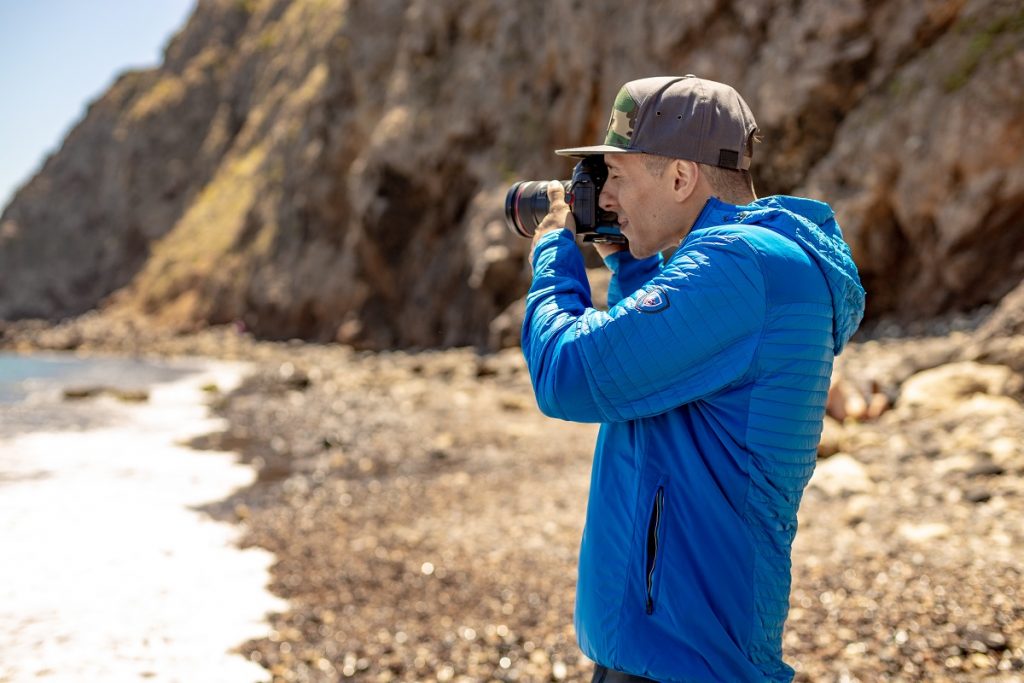
Shutter Speed
Shutter speed is the length of time the shutter will stay open when letting light enter the camera. A longer or slower shutter speed will allow more light into the camera.
A short shutter speed captures an instant, while a slower shutter speed will capture some motion, often creating a blur.
If you plan to do any night photography, you will get very used to slow shutter speeds. Slow shutter speeds also create that airbrushed look on moving water, such as waterfalls and creeks. For this effect, landscape photographers also use an nd filter (neutral density) for a longer exposure time.
Anything slower than a 1/250 second shutter speed will require you to use a tripod, which is an essential part of gear for photographers who like long exposure photography.
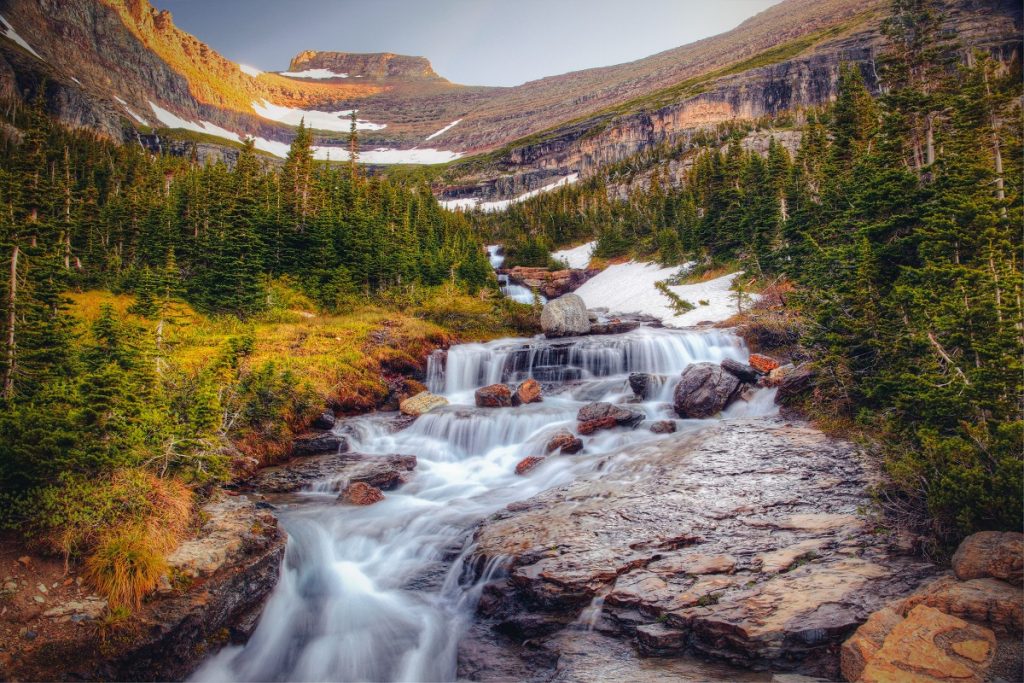
ISO
ISO brightens or darkens your photo.
As you increase ISO, your photos will get brighter, but very high ISO settings can also create a graininess in your photos, so use this with caution.
Most modern digital cameras have a base ISO of 100, so it’s best to stick with this camera setting when possible. There are instances of course that you will need to use a higher ISO, such as taking photos of fast-moving wildlife because it will allow for a faster shutter speed.
Tag Us In Your Photos!
Landscape photography is amazing both in the process and in the result. You'll surely enjoy your time outdoors practicing the eyes and trying out all of the landscape photography tips you could remember. And when you finally become able to capture the beauty you see, that's the result - you're going home with the breathtaking image you created and the feeling of pure happiness.
If you want to capture truly beautiful and unique landscape photos, make sure to try out some of these landscape photography tips. Also, make sure to read A Guide to Nature Photography Clothing & Personal Gear so you could venture out well-prepared.
And follow us on Instagram @kuhl! We regularly share our photos from the KÜHL community and we’d love to see your outdoor adventures.
